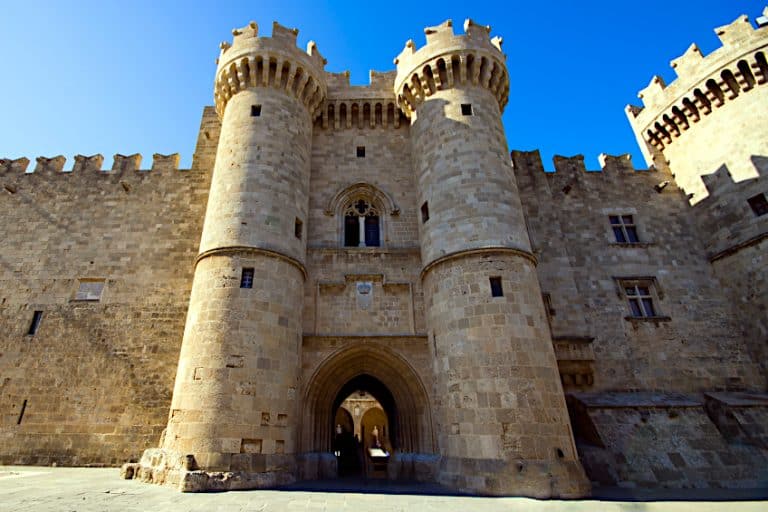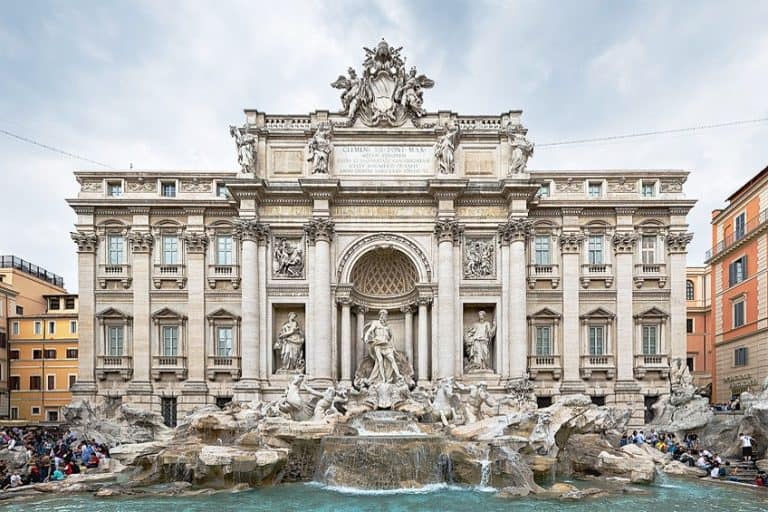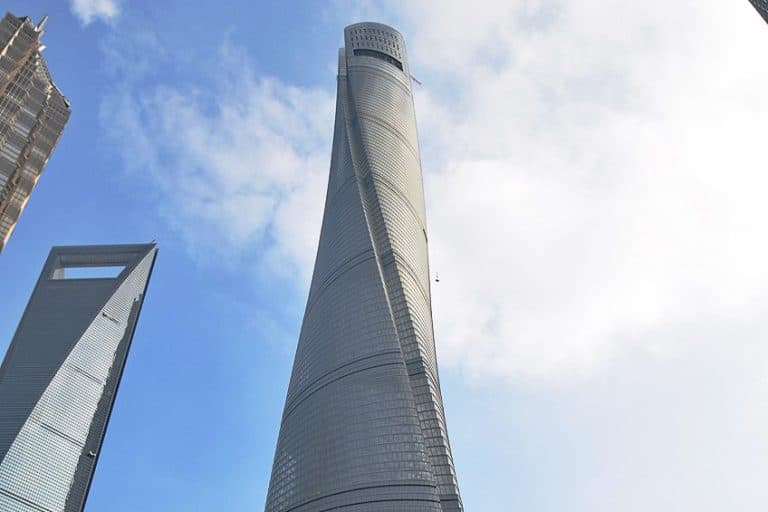Hadrian’s Wall – Walk Through Time and History
What is Hadrian’s Wall and where was Hadrian’s Wall built? Hadrian’s Wall is a historic Roman wall in England that was utilized as a defense fortification during the reign of Emperor Hadrian. This article is intended to provide you with the history of this old wall, as well as discuss Hadrian’s Wall’s architecture. We will also answer questions related to this fortification, such as “how long was Hadrian’s Wall?”, and “where is Hadrian’s Wall?”.
The Purpose and History of Hadrian’s Wall
| Patron | Hadrian (117 – 138 CE) |
| Date of Construction | 122 CE |
| Purpose | Defense wall |
| Location | Wallsend to Bowness-on-Solway, Northern England |
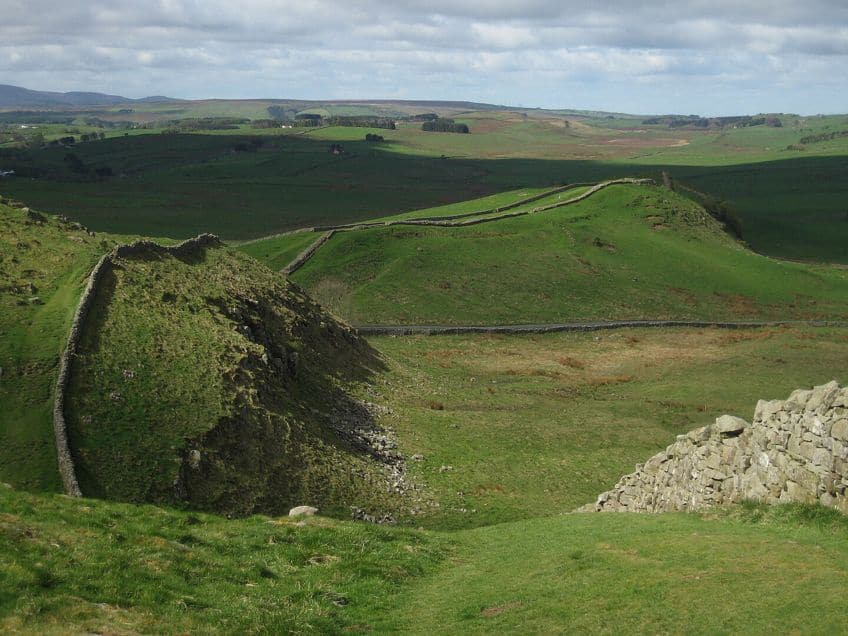
Hadrian’s Wall was a stone Roman wall in England with huge trenches in front and behind it that ran the length of the island from Wallsend to Bowness-on-Solway. Troops were stationed throughout the wall’s length in enormous defensive structures, as well as smaller mile castles and turrets. Along with its defensive military use, the wall’s gates also served as customs posts.
Hadrian’s Wall Path is a footpath that runs alongside the wall. Almost all of the Wall’s masonry was dismantled in the early modern period to be utilized for nearby farmhouses and roads.
None of the wall remains at its original height, although contemporary work has exposed several of the footings and a few pieces include some sections of subsequent masonry reconstruction. Several of the excavated forts located close to or on the wall are now open to the general public, and several nearby museums tell the history of its construction.
The History of Hadrian’s Wall
Hadrian’s Wall separated Roman Britain from unconquered Caledonia which lay to the north. The wall is wholly within England and has never formed part of the Anglo-Scottish boundary, despite being regularly and incorrectly regarded as such. Hadrian’s Wall, considered a British cultural icon, is one of England’s great ancient tourist sites and was named a UNESCO World Heritage Site in 1987.
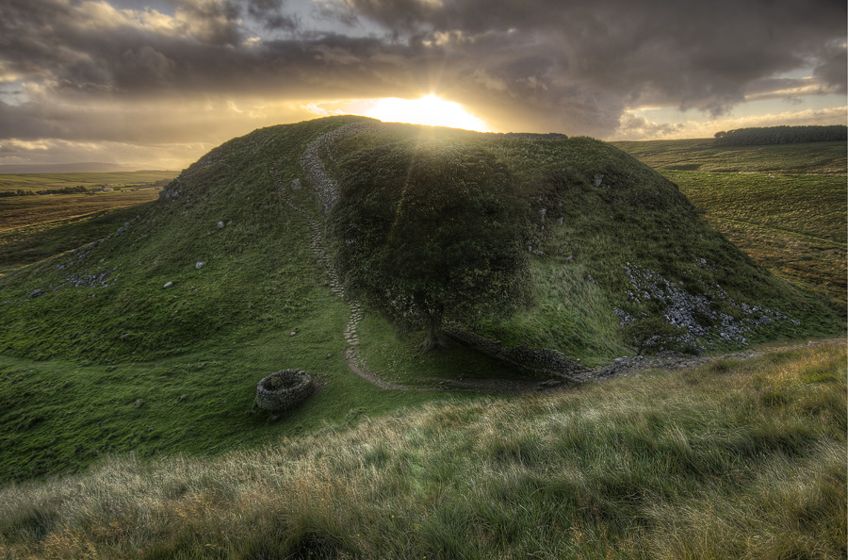
Political Context of Hadrian’s Wall
England was a province of the Roman Empire at that period, and the wall was built to define and strengthen the empire’s northern British border. The political context in which Hadrian’s Wall was built was one of centralization and protection. The Roman Empire had been rapidly expanding in the preceding century, but by Hadrian’s administration, there was increasing acceptance that the empire had surpassed its limits and that its boundaries needed to be protected.
Hadrian was well-known for having an interest in military issues and was highly conscious of the importance of protecting the empire from external attacks. The building of Hadrian’s Wall had political ramifications within the United Kingdom.
Prior to its creation, the Romans had loose control over the northern section of the island, with a network of forts and observation towers strewn about. The building of the wall signaled a turn toward the more structured and centralized rule of the region, with a strong garrison of troops stationed behind the wall to preserve order and fight against future assaults by Scotland’s local tribes.
The Purpose of Hadrian’s Wall
Hadrian’s Wall was thought to have been designed prior to Hadrian’s journey to Britain in 122 CE. Based on reconstructed sandstone fragments discovered in Jarrow dated from around 118 CE, Hadrian’s wish to retain “the empire undivided” was apparently placed on him through “divine instructions”. When Hadrian assumed the imperial throne in 117 CE, there was widespread rebellion and dissatisfaction in Roman England as well as among the inhabitants from different territories he had conquered throughout the Empire, such as Judea, Egypt, Libya, and Mauretania.
These obstacles may have motivated his plan to build the wall, in addition to the development of limes (boundaries) in other parts of the Empire, notably the Limes Germanicus in present-day Germany.
Historians disagree about how much of an imminent danger the people of northern Britain truly posed to the Romans, and whether or not there was any financial benefit in protecting and manning a single line of defenses like Hadrian’s Wall, instead of annexing and taking over what is now the Scottish Lowlands Northumberland and protecting the territory with a less rigid configuration of forts.
Hadrian and his counselors, though, devised a solution to their issues that was successful and lasted for centuries. Hadrian’s Wall’s principal purpose was to act as an immovable obstacle to invaders and raiders, individuals determined to cross its line for livestock, valuables, or slaves and then return with their plunder.
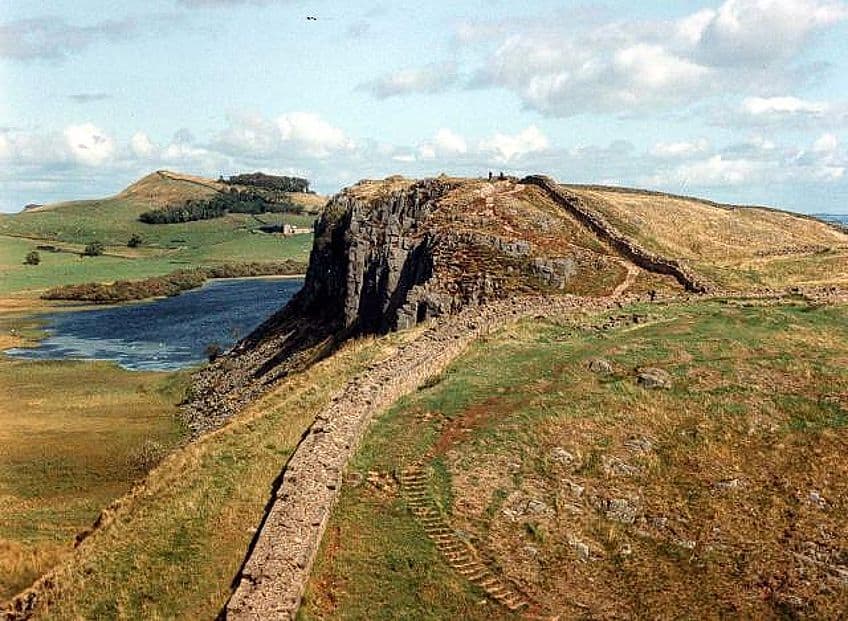
Hadrian was said to be the first person to construct a wall 130 kilometers long from shore to shore to isolate the invaders from the Romans. The theory is supported not just by the wall itself, but also by pits known as cippi that often appear on the level area in front of the wall. These pits contained branches or tiny tree trunks that had become entwined with sharpened tree limbs. These pits would make a potential attack even more challenging.
It may be considered a Roman equivalent of barbed wire, an effort to deter an enemy attack and keep assailants within reach of the defenders’ projectiles.
The wall was not a continuously fought defensive line, instead serving as an observation station that could inform Romans of an approaching assault and hold back enemy forces sufficiently that additional men were able to arrive for help. The wall served as both a defensive fortification and a means of keeping individuals within the confines of the province. The movement of the public would be routed through the Wall’s gates, so it could be analyzed for information, blocked or authorized as needed, and taxed. The wall would prove to have a significant psychological influence as well.
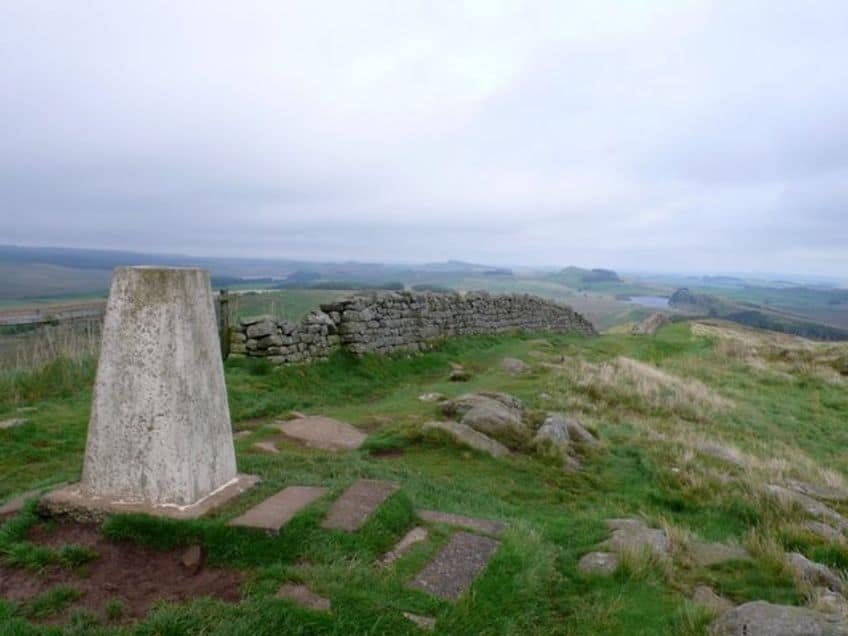
For almost 300 years, until the end of Roman power in Britain in 410 CE, Hadrian’s Wall was the strongest declaration of a particular emperor’s power, resourcefulness, and tenacity. The wall was not simply a protective fortification, but also a symbolic expression of Rome’s imperialist strength, separating the so-called cultured world from the untamed barbarian wildness. Hadrian’s Wall, therefore, was as much a propaganda declaration as a utilitarian structure.
There is some indication that Hadrian’s Wall was initially plastered and then whitewashed: its gleaming surface would have caught the sunlight and reflected it for kilometers.
Construction of Hadrian’s Wall
Hadrian reversed his predecessor Trajan’s goal of empire expansion and concentrated rather on protecting the empire’s existing borders, particularly Britain at the time. Hadrian, like Augustus, advocated utilizing organic boundaries like rivers for imperial borders, like the Rhine, Euphrates, and Danube. But Britain lacked natural boundaries that could be used to separate the Roman-controlled province from the northern Celtic tribes.
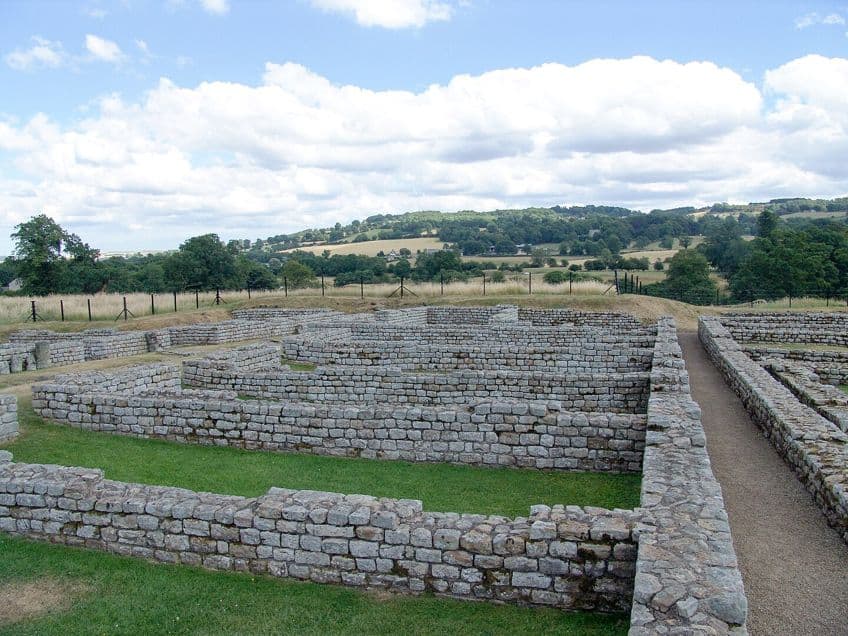
The wall’s entire length was erected with an alternating sequence of forts, each sheltering 600 people, and stationed milecastles, manned by between 12 and soldiers beginning in 122 CE. The majority of Hadrian’s Wall was built in six years by three Roman legions: the Legio VI Victrix, Legio II Augusta, and Legio XX Valeria Victrix, totaling 15,000 troops along with certain members of the Roman navy. The troops would have learned to be engineers, surveyors, carpenters, and masons, thus erecting the wall was not out of their skill set.
Turf Wall to Stone Wall
The wall was initially built from turf from Milecastle 49 to the western termination at Bowness-on-Solway, probably due to a lack of limestone for the construction of mortar. It was later removed and substituted with a stone wall. This occurred in two stages: the first during Hadrian’s rule, and the subsequent one following the re-occupation of Hadrian’s Wall following the evacuation of the Antonine Wall.
Except for the passage between Milecastles 49 to 51, where the line of the new stone wall was placed somewhat further north, the line of the new stone wall matches the line of the turf wall. Several footing courses were built over the foundations of the stone wall.
Offsets were installed above these courses on both the southern and northern faces, reducing the breadth of the wall.
Hadrian’s Wall’s Architecture and Design
We have just covered the reason why the wall was constructed as well as the construction itself. However, what did the wall look like, and what were the design features? Let’s take a deeper look at Hadrian’s Wall’s architecture and design.
Measurements
The wall stretched for 117 kilometers across the island, from Wallsend to Bowness-on-Solway. The wall’s width was reduced from the initially planned 3 meters to around 2.4 meters, or even less based on the topography, shortly after construction started. Because certain places were built with timber and turf, it would take decades to modify and replace them with stone.
Bede, a historian, and monk who died in 735 CE, stated that the wall was 3.7 meters high, but evidence suggests that it was a few feet taller when it was built. Every third mile along the length of the wall, there was a lookout tower that also served as shelter and residential quarters for the Roman troops.

Forts and Structures
The wall itself was composed of a large ditch on the north side and a succession of forts and structures built within it. Milecastles were little forts situated every Roman mile along the defensive structure, connected by a passageway through the wall. They were intended to serve as lookout towers and defensive posts for troops protecting the wall. Turrets, which were smaller than the milecastles, were placed between milecastles in order to provide extra defensive positions for the wall’s guards.
Forts, which were larger than milecastles, were built at strategic spots along Hadrian’s wall, like wherever rivers intersected the wall. These forts were manned by Romans and served as an additional line of defense.
There were several gateways through the wall, each defended by a milecastle or fort. People were able to pass through these gates. The Vallum was an earthen mound with a broad ditch that ran parallel to Hadrian’s Wall, creating an extra obstacle for anyone trying to cross it. Military Way was a path that ran along the wall’s southern side, allowing warriors to move quickly along the wall and within the forts. Beacon towers were placed on elevated locations along the wall to relay messages over the entirety of the wall, enabling soldiers to respond to attacks rapidly.
Building Materials and Techniques
Hadrian’s Wall was a massive engineering undertaking that required a wide range of building materials and techniques. The primary building material for the structure itself was stone collected from surrounding sources. Before being brought to the construction site, the stone was normally prepared and squared.
To hold the stones together, a form of mortar comprised of sand, lime, and water called mortar was utilized. Some sections of the wall were built with Roman concrete, a type of concrete made from volcanic ash, lime, and water. This was a long-lasting substance that enabled the wall to survive the elements.
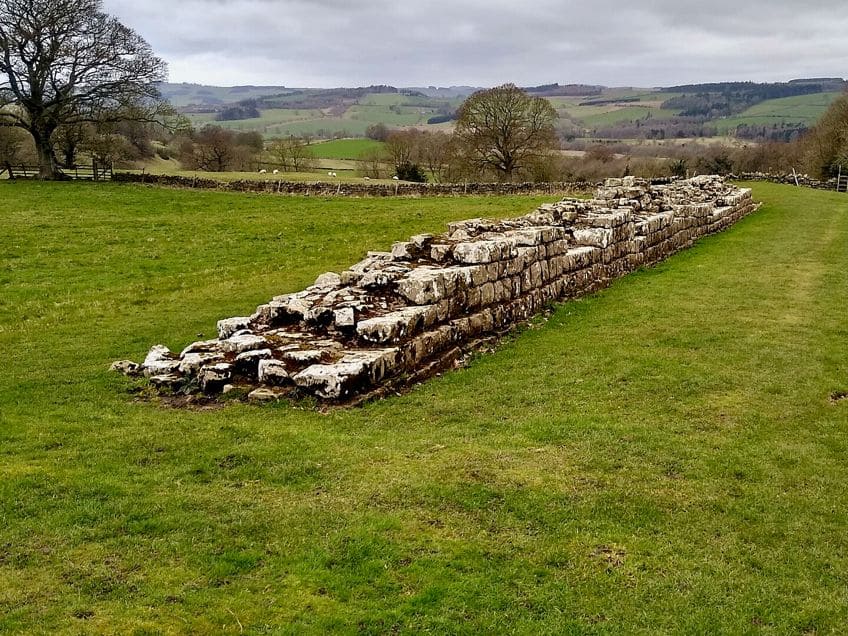
The wall was constructed on a foundation of huge stones or concrete blocks, which served as a solid base for the wall. Smaller constructions, like the turrets and milecastles, were erected in the same manner as the wall itself, with mortar and stone. The larger forts were primarily constructed of timber and stone, with timber utilized for the roof and other structural elements. The wall’s construction necessitated a high level of precision in leveling and surveying the terrain in order to guarantee that the wall was erected to a uniform elevation and level.
Life on Hadrian’s Wall
The regiments stationed in Hadrian’s Wall forts are from France, Spain, Belgium, the Netherlands, Germany, and even further afield. However, once established in the United Kingdom, these units often recruited locally, though a few soldiers from Germany, northern France, and other countries continued to become part of the British army.
Each unit consisted of cavalry, infantry, or both, and was officially 1000 or 500 strong, though historical papers indicate that many units were likely under strength.
The unit force was substantially lower in the fourth century. A Roman fort had to have a lot of barracks blocks. There was also a headquarters structure, a spacious residence for the commander in charge as well as his family, storage facilities, a workshop, granaries, and, on occasion, a hospital. Normally, the bathhouse was located outside the fort. This had a latrine, and there was typically one in the fort as well.
Surrounding Communities
Civilians were drawn to Roman forts along Hadrian’s Wall and elsewhere. Outside the forts, settlements began to spring up. There is very little proof for these in the early years of the Wall, but more information is accessible from the late second century. Several civil settlements were bigger than the forts to which they were attached, according to geophysical surveys, though the structures displayed in this way have not yet been dated. Buildings sprang up along fort defenses and around roads heading away from the forts. Some communities were marked by ditches and banks, but it is unclear whether these were defensive.
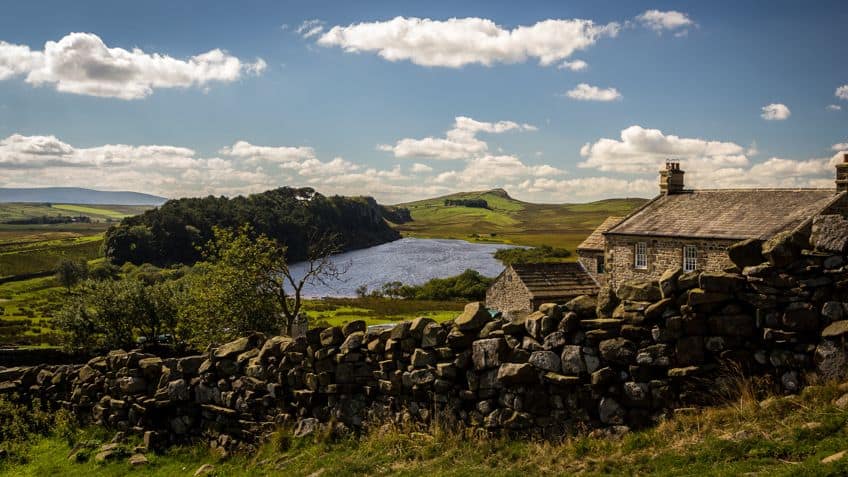
It is supposed that the women and families of the troops lived here as opposed to at the forts. Workshops and stores, taverns and inns, brothels, and temples would have all existed alongside their homes. The cemetery for both civilians and soldiers was located beyond the fort and the civilian settlement.
Cremation was the norm until the third century when burial became more widespread. Roads connected the forts with civil communities. Milestones were placed along the routes. Corbridge and Carlisle were two of the locations from where distances were measured.
Decline and Abandonment of Hadrian’s Wall
The Roman troops garrisoned the wall for a considerable amount of time, providing safety and support to the surrounding populace. Nevertheless, the wall’s use and maintenance declined over time, and it eventually deteriorated into disrepair.
The causes for this fall are numerous, but a few significant elements played a role. One factor was the Roman Empire’s own downfall. The Roman Empire was in decline by the 4th century CE, and the money and labor that had previously been allocated for the upkeep of the wall were no longer accessible.
As a result, the number of guards posted along the wall decreased, as did the amount of maintenance provided to the wall.
Another aspect was Britain’s shifting political climate. As the Roman Empire fell into further decline, many factions in Britain started to strive for influence and authority. This resulted in a breakdown in governmental order and exacerbated volatility, making it more difficult for officials to uphold the integrity of the wall. Lastly, developments regarding technology and warfare had an impact on the wall.

The defensive utility of the wall deteriorated as new tactics and weapons were created, and it proved less effective as a fortress. As a result, it became less essential to maintain and protect. As a result of these circumstances, Hadrian’s Wall’s use and upkeep dwindled, and it eventually deteriorated into disrepair.
The Impact of Hadrian’s Wall on History
Hadrian’s Wall has had a considerable impact on subsequent history, both in the United Kingdom and beyond. It served as a model for subsequent military defenses in the United Kingdom and overseas. Hadrian’s Wall’s architecture and construction techniques encouraged the creation of other defensive buildings, such as castles and fortified cities.
Archaeologists have dug up and examined the wall and its accompanying sites extensively, revealing unique insights into Roman-era Britain and the daily activities of those who were stationed and resided on the wall.
Hadrian’s Wall has become a popular tourist destination, attracting visitors from all over the world to learn about its significance in history and culture. This famous wall and its accompanying landmarks also contribute to local economies by creating jobs and obtaining money through tourism. It has also served as a political symbol, with many groups using it to advance their own goals and causes. Over time it has come to represent British nationalism and identity.
Visiting Hadrian’s Wall
Now that we have learned so much about this famous wall, you might be keen to visit it for yourself. Guests to Hadrian’s Wall have the option to walk along the wall, explore various attractions and museums on the wall, or do both. What you choose will be influenced by your personal interest in outdoor activities.
Walking Hadrian’s Wall
The best stretches of this surviving Roman wall in England can be found in the country’s center along the long-distance National Trail known as Hadrian’s Wall Path. The most extensive sections are between Sycamore Gap and Birdoswald Roman Fort. The wall near Steel Rigg in Northumberland National Park and Cawfields has particularly picturesque stretches. Much of this is challenging terrain, subjected to harsh, changing weather and with some very steep hills.

Fortunately, the trail can be broken into smaller and circular parts – possibly between stops on the AD122 bus route. The bus operates from early March to the last day of October. It makes predetermined stops but will also pick up walkers where it is safe to do so along the way. Hadrian’s Wall Country, a tourism group, produces a very handy downloadable pamphlet about traversing Hadrian’s Wall which includes several precise, easy-to-use maps with details on hostels, bus stops, parking, sights, places for getting food, and restrooms.
Cycling Hadrian’s Wall
The National Cycle Network, designated as NCR 72 on signs, includes Hadrian’s Cycleway. It’s not a mountain bike route, therefore it does not follow the wall through sensitive natural terrain but instead uses neighboring paved roads and minor traffic-free lanes.
You have to lock up the bike and walk to the wall if you’d like to see it in this manner.
Landmarks of Note Along Hadrian’s Wall
Walking the wall is fantastic for nature enthusiasts, but if you would like to know more about the Romans on the northern outskirts of their empire, the various landmarks and archeological sites along the wall will undoubtedly be much more satisfying. Most offer parking and are accessible by car or local transport. Many are managed by English Heritage or the National Trust, and a few charge entry. The longest continuous section of Hadrian’s Wall can be found at Birdoswald Roman Fort.
The fort’s outermost defense wall is the best maintained along its length, enclosing the entire fort area, containing granaries and five of the fort’s six original gatehouses.
The location has yielded some of the most compelling archaeological proof of what occurred to Hadrian’s Wall after the Romans departed Britain. Chesters Roman Fort and Museum, roughly 30 miles from the wall’s eastern end, is Britain’s best intact military bathhouse and Roman cavalry fort. The bath house, near the River Tyne, is remarkable, with walls maintained to the top of the start of the arches in certain sections.
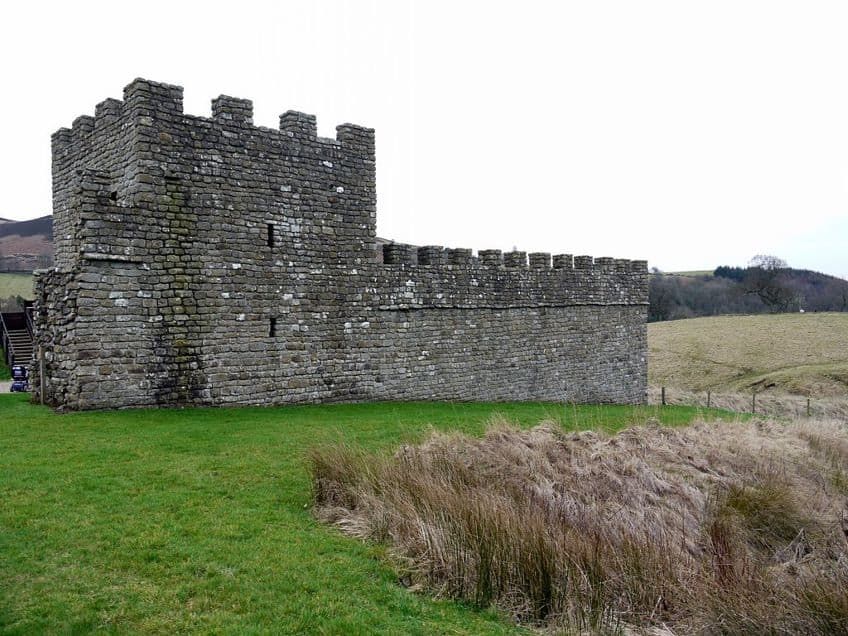
There is a colonnaded commander’s home, barracks, and an outstanding museum containing archaeological artifacts from the location. Corbridge progressively evolved from a military supply post for Roman legions to a bustling civilian town where individuals from all over the Empire resided and worked over a 350-year period. The Corbridge artifact collection represents one of the largest in English Heritage’s care.
Hadrian’s Wall is the ruins of stone fortifications constructed by the Roman Empire after its conquest of England in the 2nd century CE. The original structure spanned more than 117 kilometers across northern England, with Hadrian’s Wall being comprised of several forts and a ditch to protect against invading forces. In several locations, the remains of a stone wall can still be seen and are still visited by tourists today.
Frequently Asked Questions
How Long Was Hadrian’s Wall in Total?
Hadrian’s Wall was around 73 miles (117 kilometers) long in the modern era, or about 80 Roman miles if measured by the systems used during its construction. The wall ran along Britain’s east and west coasts, close to the town of Wallsend through to Bowness-on-Solway. It was up to 15 feet high and 10 feet broad, and made of turf and stone. The final six kilometers of the wall in both the western and eastern directions were erected last, with a breadth of only 2.5 meters.
What Is Hadrian’s Wall?
Emperor Hadrian traveled to Britain in 122 CE. Later that year, construction on the barrier that would become Hadrian’s Wall began. This wall established a real, man-made border that did not exist elsewhere in the Empire. The main phase of Hadrian’s Wall was a massive undertaking that required thousands of workers to finish and took more than four years. The wall was constructed of stone blocks, and its size varied throughout its entire length.
Where Was Hadrian’s Wall Built?
Most people know that it is a Roman wall in England, but exactly where is Hadrian’s Wall? Hadrian’s Wall runs from the east coast at Wallsend to Bowness-on-Solway on the western coast, passing through what are now the counties of Cumbria, Northumberland, Tyne, and Wear. The wall passes through the country’s narrowest point, marking the Roman Empire’s northernmost frontier at its peak. A significant portion of the wall and its connected sites, such as the many forts, milecastles, and turrets located along its length, have been preserved as a UNESCO World Heritage Site, and are accessible to visitors who can learn about Hadrian’s Wall’s architecture and archaeological history.
Justin van Huyssteen is a freelance writer, novelist, and academic originally from Cape Town, South Africa. At present, he has a bachelor’s degree in English and literary theory and an honor’s degree in literary theory. He is currently working towards his master’s degree in literary theory with a focus on animal studies, critical theory, and semiotics within literature. As a novelist and freelancer, he often writes under the pen name L.C. Lupus.
Justin’s preferred literary movements include modern and postmodern literature with literary fiction and genre fiction like sci-fi, post-apocalyptic, and horror being of particular interest. His academia extends to his interest in prose and narratology. He enjoys analyzing a variety of mediums through a literary lens, such as graphic novels, film, and video games.
Justin is working for artincontext.org as an author and content writer since 2022. He is responsible for all blog posts about architecture, literature and poetry.
Learn more about Justin van Huyssteen and the Art in Context Team.
Cite this Article
Justin, van Huyssteen, “Hadrian’s Wall – Walk Through Time and History.” Art in Context. August 23, 2023. URL: https://artincontext.org/hadrians-wall/
van Huyssteen, J. (2023, 23 August). Hadrian’s Wall – Walk Through Time and History. Art in Context. https://artincontext.org/hadrians-wall/
van Huyssteen, Justin. “Hadrian’s Wall – Walk Through Time and History.” Art in Context, August 23, 2023. https://artincontext.org/hadrians-wall/.




